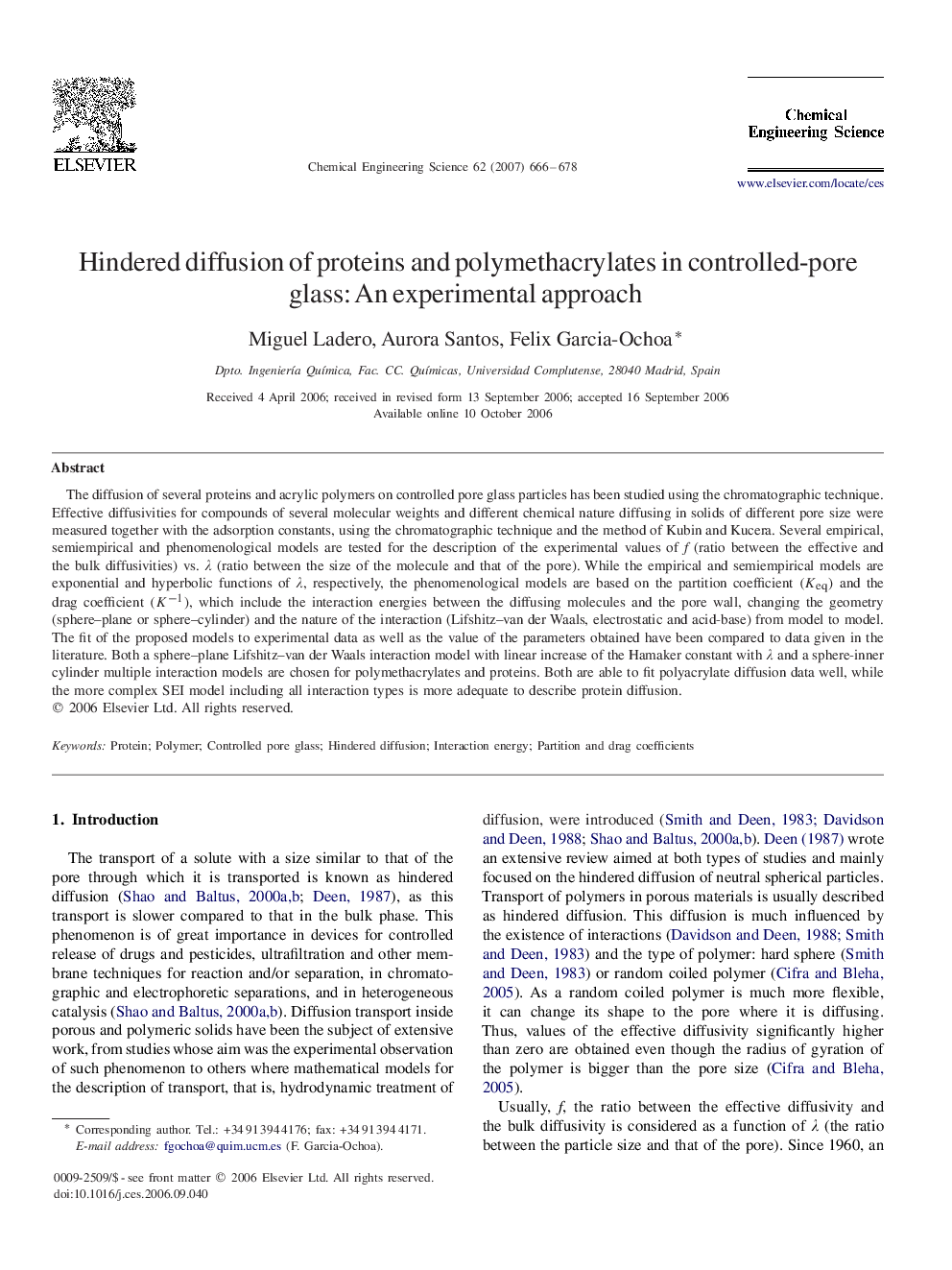| Article ID | Journal | Published Year | Pages | File Type |
|---|---|---|---|---|
| 160240 | Chemical Engineering Science | 2007 | 13 Pages |
The diffusion of several proteins and acrylic polymers on controlled pore glass particles has been studied using the chromatographic technique. Effective diffusivities for compounds of several molecular weights and different chemical nature diffusing in solids of different pore size were measured together with the adsorption constants, using the chromatographic technique and the method of Kubin and Kucera. Several empirical, semiempirical and phenomenological models are tested for the description of the experimental values of f (ratio between the effective and the bulk diffusivities) vs. λλ (ratio between the size of the molecule and that of the pore). While the empirical and semiempirical models are exponential and hyperbolic functions of λλ, respectively, the phenomenological models are based on the partition coefficient (Keq)(Keq) and the drag coefficient (K-1)(K-1), which include the interaction energies between the diffusing molecules and the pore wall, changing the geometry (sphere–plane or sphere–cylinder) and the nature of the interaction (Lifshitz–van der Waals, electrostatic and acid-base) from model to model. The fit of the proposed models to experimental data as well as the value of the parameters obtained have been compared to data given in the literature. Both a sphere–plane Lifshitz–van der Waals interaction model with linear increase of the Hamaker constant with λλ and a sphere-inner cylinder multiple interaction models are chosen for polymethacrylates and proteins. Both are able to fit polyacrylate diffusion data well, while the more complex SEI model including all interaction types is more adequate to describe protein diffusion.
